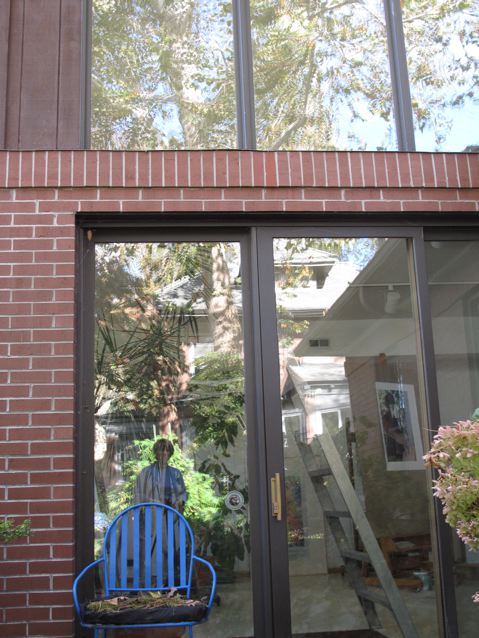I walk to work. Cup of coffee in hand, making my way through the garden, a three dimensional extension of my painting, to the studio. My work is deeply rooted in what is right around me, but hopefully encompasses what is far afield.
There are many languages. I have chosen the visual one, using the traditional tools of painting to celebrate common moments in everyday life that yet reveal the magic of the unexpected if you watch for it.

Studio
Perhaps it began about fifth or sixth grade when I said to myself, "You're an artist; go outside and make a picture." A hot afternoon's struggle ensued trying to unlock the mystery of how all the myriad leaves on our cherry tree could ever become an image made with crayons on a cheap piece of manila paper. From that day of confrontation with the cherry tree, I have felt a need to grab experience, hold on tight and try to prevent its disappearance into the pain of passing time. It's a push back against oblivion, futile, but necessary, a pleasurable struggle, most of the time.
Always there is the hands-on pleasure of color, light, the pull of the paint-laden brush across the nubbly canvas surface, the challenge of solving the particular problem I've set for myself, the solitude, Mozart or Mongolian throat-singing in the air, birds flittering around the bird feeder outside, a neighbor-child's laughter drifting in the open window, my dog scratching at the studio door, the angle of the sun changing through the day's work, dinner to be made and shared. But just one more pass with a different color at that area that says, "Attend to me".
Painting is going well when I reach for a tube of paint and haven't even thought about which one: reflexive, physical, eyes roaming freely, mind intently considering whether the hue is right, the value relationships are working. Too much? Too little? Too big? Too small? Change it. Try it. Maybe right. Maybe wrong. Keep breathing. Do it again.
Is the painting breathing?
Tomorrow it begins anew.